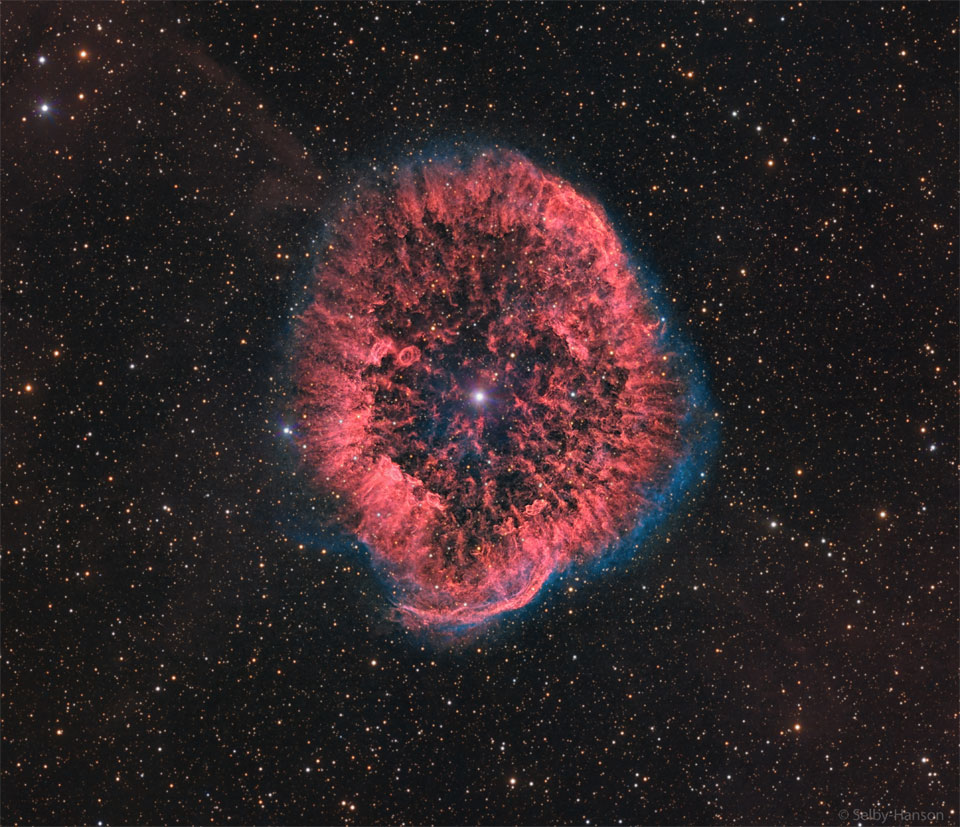APOD Robot wrote:
The central star in this image is
WR 40...
Warning! This is a bad site!
<<<<<<<<<<<<<<<<<<<<<<<<<<<<<<<<<<<<<<<<<<<<<<<<<<<<<<<<<<<<<<<<<<<<<<<<<<<<<<<<<<<<<<<<<<<<<<<<<<<<<<<<<<<<<
Universe Guide wrote:
WR 40 is located in the Milky Way galaxy, and this is the galaxy that you reside in.
Fancy that. I have always wondered.

In case you're wondering, WR 40 is not located within the Solar System, and there is only one star in the Solar System, the Sun.
You don't say?

No one has visited WR 40, and we have no probes on a rendezvous with the star.
Ohh-kay.

All non-Rogue Stars, like planets, orbit around a central spot.
Say what?

Based on the star's spectral type of WN8 (SB1), There is no relationship between colour and size.
I feel enlightened.

WR 40 radius has been calculated as being 73.49 times bigger than the Sun. The Sun's radius is 695,800km, therefore, the star's radius is an estimated 51,134,342.km. If you need the star's diameter, you just need to multiply the radius by 2.
Are you sure the WR star's radius isn't 51,134,34
3 km?

But thanks for the tip on how to calculate a star's diameter from its radius!

Our own Sun is the brightest star and therefore has the lowest of all magnitudes, -26.74.
Who said our Sun is an ordinary star?

WR 40 distance from Earth is 16308.17 light-years away from Earth or 5000 parsecs. If you want that in miles, it is about 95,869,621,952,191,753.094, based on 1 Ly = 5,878,625,373,183.61 miles.
Darn! Now I have to convert that into kilometers!

When you use the 2007 distance, WR 40 is roughly 375,023,932.219 Astronomical Units from the Earth/Sun give or take a few.
Thanks... I have always been wondering...

⇒

A note about the calculations, when I'm talking about years, I'm talking about non-leap years only (365 days).
Well, I just checked my calendar, and it appears that 2023 is not a leap year!


<<<<<<<<<<<<<<<<<<<<<<<<<<<<<<<<<<<<<<<<<<<<<<<<<<<<<<<<<<<<<<<<<<<<<<<<<<<<<<<<<<<<<<<<<<<<<<<<<<<<<<<<<<<<<<<<<<<<<<<<<
Right. I guess I have just shown you what kind of a site that Universe Guide really is.
Now let's look at the really problematic claims of this site:
WR 40 radius has been calculated as being 73.49 times bigger than the Sun.
No.
Wolf-Rayet stars are not extremely large. That is because they lose such prodigious amounts of matter through their furious stellar winds. What remains of the star itself just gets smaller and smaller.
Wikipedia wrote about another WR star, WR 104, that its radius is 3.29 solar radii. If WR 40 is of a reasonably similar size, which seems likely to me, then Universe Guide exaggerated the size of WR 40 by some 20 times.
Here is another tidbit:
WR 40's effective temperature is 7,431 Kelvin which is hotter than our own Sun's effective temperature, which is 5,777 Kelvin.
No.
Unfortunately, I have never managed to make head or tails of what exactly is meant by "effective temperature". But if we drop the "effective" from "effective temperature" and just consider the straightforward temperature of the photosphere of the Sun and a typical WR star, then the Sun's temperature is indeed around 5,777 K, whereas the temperature of WR 140 is calculated to be 45,000 K. It seems likely to me that the temperature of WR 40 is similar.
So when Universe Guide claims that the temperature of WR 40 is 7,431 K, it is underestimating the temperature of this star by a factor of 6.
However, if the temperature of WR 40 really had been 7,431 K, then WR 40 would have been an F-type star. It would have been similar to Procyon, with a luminosity of 7 times solar from a distance of 11 light-years. Hello, Procyon my old friend, I've come to talk with you again! 🖐
So, no. There apparently exists no good information on WR 40 specifically, so if you want to know about this particular star, the best thing you can do is read Wikipedia info and other online info about other WR stars. And, to summarize:
APOD shouldn't use Universe Guide to find any specific information about WR 40 (such as temperature, size and luminosity). I wouldn't trust a word that Universe Guide says about these things.
Ann
 Stellar Wind-Shaped Nebula RCW 58
Stellar Wind-Shaped Nebula RCW 58

